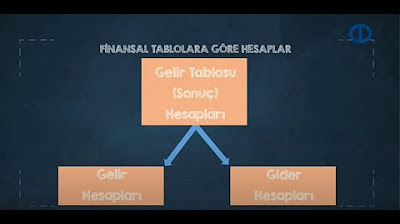Learn to skydive AFF Course explained. Perth, Jurien Bay WA
Summary
TLDRThe video script outlines a comprehensive skydiving training program, detailing each stage from fundamental body positions and sensory awareness to advanced maneuvers like 360-degree turns and tracking. It emphasizes the importance of proper exit techniques, altitude checks, and signals for body adjustments. The progression leads to practicing emergency exits and concludes with the skillful execution of sub-terminal control and tracking, preparing students for safe and controlled skydives.
Takeaways
- 🪂 The fundamental aspect of skydiving is maintaining a good body position in freefall, with the arch being crucial for stability.
- 📢 Instructors use a series of hand signals to communicate adjustments in body position during freefall.
- 🔍 Stage one focuses on overcoming sensory overload and raising awareness, starting with altitude checks and practicing body positions.
- 🚀 The student's exit from the plane involves a clear movement into the arch position and immediate altitude awareness checks.
- 📍 In stage two, students refine their body positions and practice heading and altitude awareness, including 180-degree turns.
- 🔄 Stage three consolidates heading maintenance, body position, and turning, with adjustments made by instructors for optimal performance.
- 🎯 Stage four introduces heading awareness control and solo freefall, emphasizing maneuvers and maintaining heading with minor adjustments.
- 🌀 Stage five involves 360-degree turns and forward movement, practicing smooth transitions and altitude checks before deployment.
- 🏞 Stage six consolidates turning, forward movement, and docking, with an emphasis on maintaining heading awareness and body position.
- 🤸♂️ Stage seven teaches sub-terminal control, backflips, and tracking, highlighting the importance of body position for stability.
- 🏋️ Stage eight focuses on fast fall, slow fall, and tracking, practicing altitude awareness and body position adjustments for control.
- 🚨 Stage nine is for low exit emergency exit practice, emphasizing a controlled exit and smooth landing techniques.
Q & A
What is the most important aspect of skydiving mentioned in the script?
-The most important aspect of skydiving mentioned in the script is maintaining a good body position in freefall.
What are the basic body positions for a skydiver during freefall?
-The basic body positions include having the head back, knees to shoulder width apart and slightly bent, and the arch position to help maintain stability.
What are some of the signals used by instructors in the sky to communicate with skydivers?
-Some signals include pointing up to mean arch harder, bending fingers to indicate bending the knees, and straight fingers to signal straightening the legs.
What is the purpose of stage one in the skydiving course?
-Stage one aims to help students overcome sensory overload, height awareness, and general awareness by practicing body positions and altitude checks.
How does a student initiate the parachute deployment during the course?
-The student initiates the parachute deployment by performing a wave arch reach and then pulling the deployment handle at the appropriate altitude.
What guidance is provided to students after the parachute is open?
-After the parachute is open, students are guided down to the ground using an arrow to indicate the landing direction, a windsock to show wind direction, and an instructor on the radio for further guidance.
What is the focus of stage two in the course?
-Stage two focuses on heading awareness, body awareness, and the introduction of terms, with practice on body position adjustments and deployment.
What maneuver is introduced in stage three to help with heading maintenance and control?
-In stage three, students practice 180-degree turns to the left and right to help with heading maintenance, body position, and control.
What does stage four aim to teach students about heading awareness and control?
-Stage four aims to teach students heading awareness, control, and solo freefall, with an emphasis on maintaining heading and making minor adjustments for stability.
What advanced maneuvers are introduced in stage five?
-In stage five, students learn 360-degree turns, forward movement, and docking, which are advanced maneuvers to improve control and body positioning.
What are the objectives of stage six in terms of turning, forward movement, and docking?
-Stage six aims to consolidate solo exit, turning, forward movement, and docking, with an emphasis on maintaining good body position and heading awareness.
What are the goals of stage seven in terms of sub-terminal control and maneuvers?
-Stage seven focuses on sub-terminal control, backflips, and tracking, where students practice exiting, maintaining stability, and focusing on a point on the horizon for tracking.
What is the purpose of stage eight and the maneuvers practiced?
-Stage eight aims to consolidate fastball freefall and tracking, where students increase their speed, practice slow fall by pushing down air, and continue tracking for better control.
What is the focus of stage nine and why is it important?
-Stage nine focuses on low exit and emergency exit practice, which is important for controlled exits and short delays in emergency situations, ensuring a safe landing.
Outlines

هذا القسم متوفر فقط للمشتركين. يرجى الترقية للوصول إلى هذه الميزة.
قم بالترقية الآنMindmap

هذا القسم متوفر فقط للمشتركين. يرجى الترقية للوصول إلى هذه الميزة.
قم بالترقية الآنKeywords

هذا القسم متوفر فقط للمشتركين. يرجى الترقية للوصول إلى هذه الميزة.
قم بالترقية الآنHighlights

هذا القسم متوفر فقط للمشتركين. يرجى الترقية للوصول إلى هذه الميزة.
قم بالترقية الآنTranscripts

هذا القسم متوفر فقط للمشتركين. يرجى الترقية للوصول إلى هذه الميزة.
قم بالترقية الآنتصفح المزيد من مقاطع الفيديو ذات الصلة

How to Start Calisthenics for Complete Beginners (Weekly Routine, Building Strength, Progression)

How to Create Mental Strength That Makes You Unbreakable (Samurai Method)

How to Design an Effective Workout Plan: Ultimate Guide for Beginners | Joanna Soh

FİNANSAL MUHASEBE - Ünite 2 Konu Anlatımı 1

LEARN TO DRAW FROM LVL 0 to 100 🚀

Developing the Basics | Bar Stations
5.0 / 5 (0 votes)
